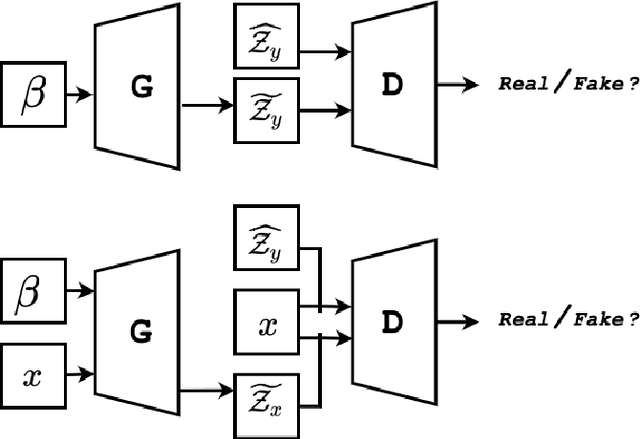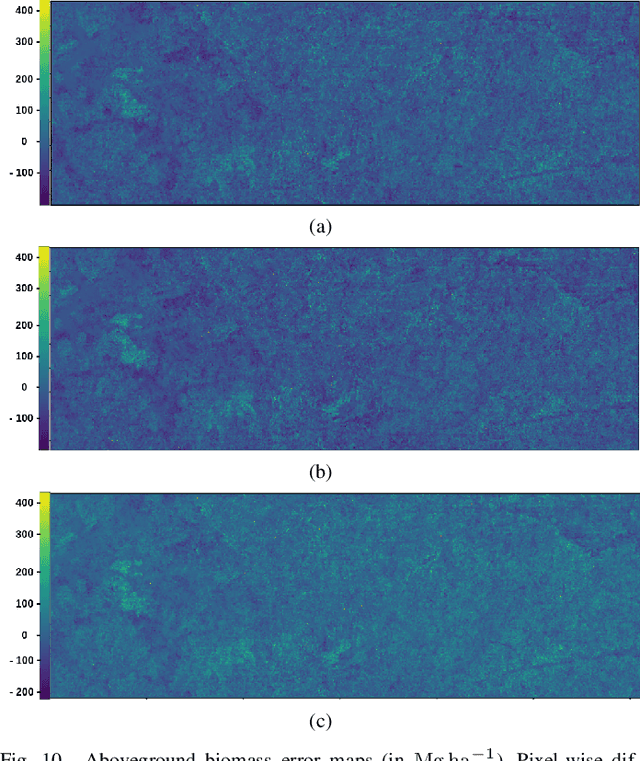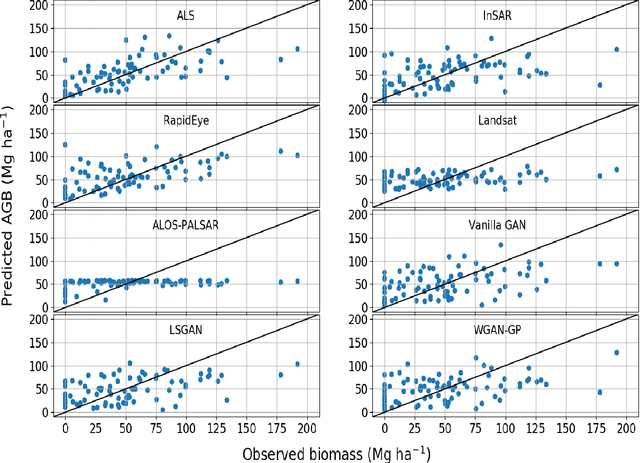Constructing Forest Biomass Prediction Maps from Radar Backscatter by Sequential Regression with a Conditional Generative Adversarial Network
Paper and Code
Jun 21, 2021



This paper studies construction of above-ground biomass (AGB) prediction maps from synthetic aperture radar (SAR) intensity images. The purpose is to improve traditional regression models based on SAR intensity, trained with a limited amount of AGB in situ measurements. Although it is costly to collect, data from airborne laser scanning (ALS) sensors are highly correlated with AGB. Therefore, we propose using AGB predictions based on ALS data as surrogate response variables for SAR data in a sequential modelling fashion. This increases the amount of training data dramatically. To model the regression function between SAR intensity and ALS-predicted AGB we propose to utilise a conditional generative adversarial network (cGAN), i.e. the Pix2Pix convolutional neural network. This enables the recreation of existing ALS-based AGB prediction maps. The generated synthesised ALS-based AGB predictions are evaluated qualitatively and quantitatively against ALS-based AGB predictions retrieved from a traditional non-sequential regression model trained in the same area. Results show that the proposed architecture manages to capture characteristics of the actual data. This suggests that the use of ALS-guided generative models is a promising avenue for AGB prediction from SAR intensity. Further research on this area has the potential of providing both large-scale and low-cost predictions of AGB.
 Add to Chrome
Add to Chrome Add to Firefox
Add to Firefox Add to Edge
Add to Edge